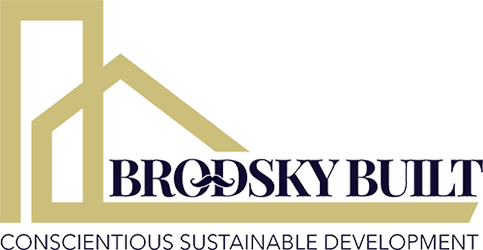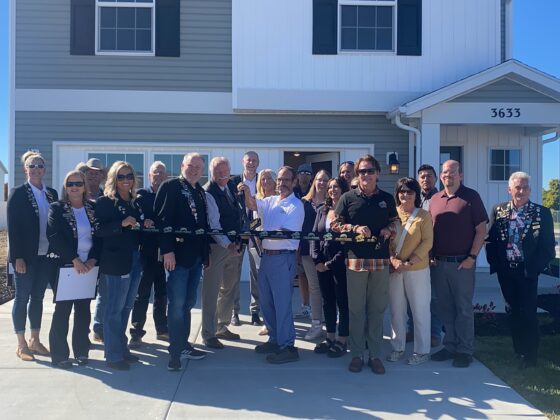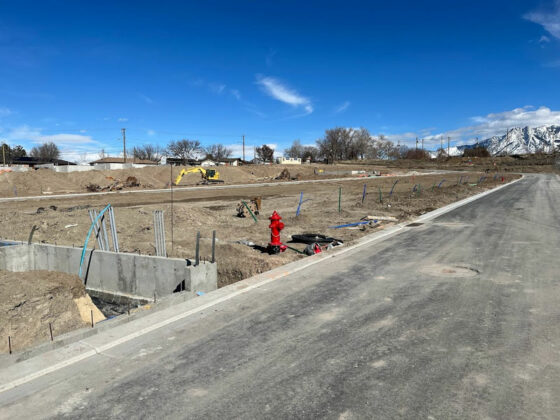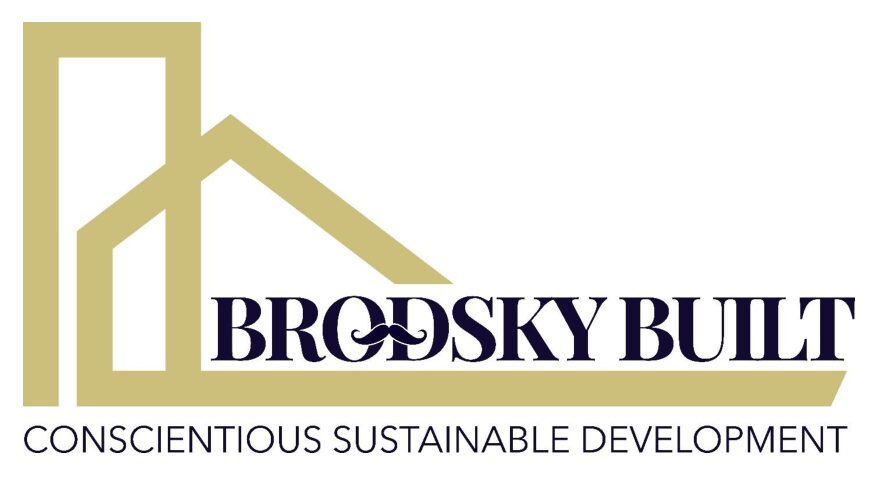MINING REAL ESTATE GOLD ON SITE OF LONG-GONE COPPER SMELTER
MURRAY, UTAH – When Michael Brodsky came across eight acres of former industrial site sitting vacant in this bustling, small city in the middle of the Salt Lake Valley, he envisioned a thriving new residential community where others only saw challenging environmental cleanups.
With the recent completion of 20 single-family and 54 townhome lots at Bullion Place – on the site of a late 19th-century copper smelter – this is the fifth environmental cleanup project, and 11th residential or commercial development, Brodsky has built in Murray, alone or with partners.
“So much time, effort, and work has gone into cleaning up and getting the property ready for development,” says Jacob Ballstaedt of Garbett Homes, which partnered with Brodsky to build the townhomes at Bullion Place. “It’s rare to find a piece of land this large in the heart of the valley and Mike has done a really great job of cleaning up the ground for a sizeable and beautiful neighborhood.”
Why have so many of Brodsky’s projects involved voluntarily cleaning up century-old waste from the vestiges of Murray’s industrial past?
“These old industrial sites in Murray, Midvale, and other communities just sort of call out to me,” Brodsky says with a smile. “I welcome the challenges and opportunities that come with transforming brownfield properties in prime locations. The things that made Murray convenient for industry in the 19th century – location, location, and location – are the same things that make sites like Bullion Place perfect today for residents seeking walkable, amenity-rich neighborhoods with easy access to freeways, TRAX, and FrontRunner.”
FROM EARLY 20TH CENTURY INDUSTRIAL POWERHOUSE …
Between the end of the 19th century and the late 1930s, Murray City was an important center for smelting and refining lead and precious metals from ore mined in the mountains surrounding the Salt Lake Valley. Industry built Murray, but left behind contaminated land that couldn’t be developed without extensive cleanup.
The site of the Bullion Place Subdivision, for example, was home to the Highland Boy Smelter, which refined copper ore between 1899 to 1907. While parts of the eight-acre property have been used periodically over the decades, it remained contaminated with slag, a waste material from metal smelting that contains high levels of toxic lead and arsenic. In recent years, a grocery store company used part of the site for a communications facility, before closing it and putting the property up for sale.
Several developers considered buying the property but decided it was too difficult to clean up and walked away from it. Brodsky and his company, Brodsky Built, saw the (figurative) glint of gold among the slag piles and bought the site to replicate their successful formula of cleaning up the land and creating another desirable residential community.
(No stranger to taking risks, Brodsky established Utah’s first commercial wetland mitigation bank in 1996, selling credits to developers whose projects disturbed wetlands and creating more than 300 acres of vibrant new wetlands elsewhere in Salt Lake County.)
… TO ONE OF UTAH’S MOST DESIRABLE PLACES TO LIVE
When the cleanup and development work is completed, the Bullion Place Subdivision will provide homes to 74 families in the heart of Murray and the Salt Lake Valley. In all, 20 single-family homesdeveloped by Brodsky Built, and 54 townhomes built by Garbett Homes will be a part of Bullion Place. The new neighborhood will feature a community park with picnic areas, a playground, and open spaces for multiple uses by residents of Bullion Place.
“The city appreciates that Mike Brodsky is cleaning up the environment and that he is providing more housing,” says Doug Hill, Murray City’s Chief Administrative Officer. “The housing shortage is a serious issue in Murray and the entire Salt Lake Valley. Bullion Place, like Mike’s other projects, offers a good variety of housing options. We’re happy to say goodbye to the contaminated soil and hello to the new families moving into the neighborhood.”
Brodsky gives Murray City high marks, too. “Building in Murray has been the highlight of my career. The professionalism, competency, and integrity of the city administration have made working here a real pleasure. It is a very satisfying experience to be able to take blighted sites and turn them into vibrant safe, quality residential neighborhoods. I’m proud of what we have accomplished.”
ANATOMY OF A VOLUNTARY ENVIRONMENTAL CLEANUP
The environmental cleanup for the Bullion Place Subdivision cost about $1 million and Brodsky assembled a seasoned and knowledgeable team to conduct it. The group included Nick Mingo, a civil engineer at EDM Partners to design the site; Chris Nolan of Wasatch Environmental to oversee the design of the cleanup process; and Joe Dunn with Kilgore Companies to do the cleanup work itself.
The first step in the process was to identify the scope of the contamination. Extensive test borings and laboratory analysis determined that the site contained slag with high concentrations of lead and arsenic and that there were no other sources of contamination. Testing found that the slag material did not dissolve in water and that the soil surrounding the slag was not contaminated. This meant that the slag could be isolated, collected, and removed, leaving behind nothing but clean soil and a buildable site.
The Bullion Place cleanup project was done under the authority of the state of Utah’s Voluntary Cleanup Program, or VCP. It was reviewed and approved by Utah Department of Environmental Quality (UDEQ) officials headed up by Bill Rees, and including onsite oversight by Lincoln Grevengoed. The final step before construction can begin on the property was for UDEQ to issue a Certificate of Completion, indicating that the site has been safely cleaned to residential standards. .
SOMETIMES, IT’S THE LITTLE THINGS THAT MATTER MOST
Environmental cleanups are necessarily messy, and, like most construction projects, they can cause disruptions for neighboring residents and businesses. Taking pains to reduce and eliminate neighborhood impacts like trucks tracking out mud is a Brodsky priority. Sometimes, though, residents want to get closer to the action.
“One of my favorite stories from this development is about a toddler and his mother walking by the site every day and watching the heavy equipment at work,” Brodsky remembers. “After seeing this happen for a few days, the Kilgore construction crew stopped work briefly the next time the mom and kid came by and surprised the young child with a drawing and description of all of the equipment used on site, along with a Tonka-size bulldozer. It was a wonderful and simple gesture and reminded me of why I love what I do.”




